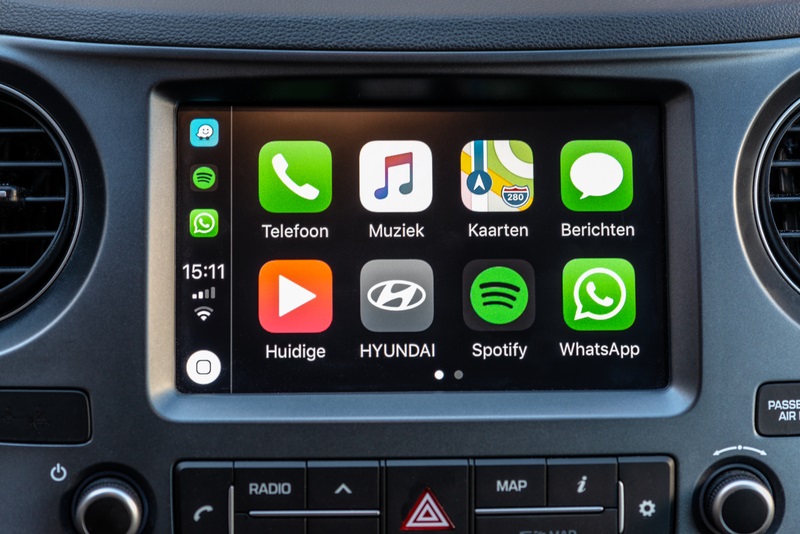
The chief executive of Highways England has expressed concerns about the safety of in-car touchscreens and the potential for distracting drivers. This concern is echoed by many fleet managers, due to in-vehicle environments becoming filled with technology designed to assist (or entertain) drivers.
British law states it is illegal to hold a mobile phone or satellite navigation device while driving or riding a motorcycle. Drivers must have hands-free access, such as a Bluetooth headset, voice command or built-in sat nav to use these devices legally.
The key research cited to support the law was conducted at TRL in 2002 (see Don’t drive drunk – or use a phone), which benchmarked the distracting effects of using hands-free and hand-held mobile phones against the effects of being under the influence of alcohol.
This study showed that using a hand-held device while driving increased response times by half a second, therefore increasing stopping distance by over 15m when driving at 70mph. Even using hands-free increased response times and stopping distance by over 12.5m when travelling at 70mph (see figure 1).
Since then, TRL’s simulated distraction test route has been used to investigate the level of impairment while driving caused by text messaging and using social networking applications (see figure 2).
Task dependent
Research from 2015 suggested that the impact of distraction on safety is task dependent - rather than device dependent. For example, both text messaging and using an entertainment system are more distracting than a hands-free mobile phone call. Further research has found that drivers see using unfamiliar car controls and car displays, or add-on media (e.g. music devices) to be more distracting than using a hands-free device.
The findings are valuable in terms of what they tell us about the distracting effects of mobile phones and earlier generations of human machine interfaces (HMIs). However, in the years since these studies were conducted, the range of potential sources of in-vehicle distraction and the variety of tasks that are conducted via HMIs has increased significantly, with a likely growth in distraction effects.
The last decade has witnessed an explosion in the availability of new vehicle technology. Some has been built into the vehicle by manufacturers, some has been added within aftermarket products and some has been brought into the vehicle by drivers, such as mobile phones.
This leads to several questions: To what extent are research studies based on mobile phone use relevant to modern HMIs? Is further research required to investigate the effects of interacting with the latest versions of HMIs? And should a limit be placed on the features added to HMIs, as was suggested by a panel of experts at a Society of Automotive Engineers Congress in 2016, which urged HMI designers and engineers to stop trying to turn automotive HMIs into iPhones?
Rapid advances
Technology is advancing at a rapid pace. However, one feature of the driving environment that hasn’t developed is the driver. Using advanced simulators, TRL tests the latest in-vehicle systems and provides guidance to regulatory authorities and manufacturers to ensure that the technology and increased levels of driver assistance offered by new HMIs do not overload the driver.
This is especially important when considering the move towards increased automation of the driving task; it will be many years before a large part of the fleet is fully, or even partially, automated – in the meantime the information presented to the vehicle operator steadily increases, while their role is gradually reduced to that of a system monitor.
Our research and understanding of this area suggest that the evidence base for measuring and monitoring driver distraction should be reviewed and updated to reflect the latest developments in HMIs. This should include an assessment of the effects of attending to multiple sources of information – not all of it relevant to the driving task.
For example, on behalf of IAM RoadSmart, TRL is using the DigiCar simulator to measure the effects on performance of engaging with Android Auto and Apple CarPlay while driving.
Without effective regulation based on sound science, the explosion of new vehicle technology that has occurred in the last 15 years could be dwarfed by the influx of the next 10 years. Up-to-date evidence is required to ensure that in-vehicle technological improvements don’t have unintended, negative consequences.










